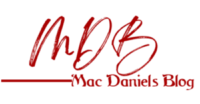The military aid for Ukraine uses the interest and other profits from the Russian assets but not the underlying assets themselves, which will remain frozen.
EU foreign ministers approved €1.4 billion ($1.5 billion) in military aid for Ukraine, with the package to be financed for the first time by proceeds from frozen Russian Central Bank assets.
Top EU diplomat Josep Borrell said this on Monday, ahead of the ministers’ meeting in Luxembourg, that the funds needed to reach Ukraine quickly and “avoid any blockage.’’
The approval came as a welcome boost for Kyiv amid Hungary’s ongoing opposition to other packages from an off-budget fund called the European Peace Facility (EPF) worth more than €6 billion.
Each EU member state has a veto on EPF payments, and Hungary has been blocking some disbursements related to Ukraine for nearly a year.
A €5 billion support fund is also blocked.
EU diplomats were not expecting a breakthrough on the EPF deadlock with Hungary.
As a result, Ukraine’s military aid from the proceeds is a useful alternative means of support. Careful legal footwork to enable aid.
EU member states first approved using the proceeds to buy arms for Ukraine in May; however, due to Hungary’s veto, it was unclear when the first payments would flow.
A legal analysis noted that Hungary abstained from the decision to use the frozen assets for Ukraine and that the new aid is derived from Russian Central Bank assets and not EU funds.
Budapest’s veto did not apply.
Mr Borrell said on Monday that the finances cannot be stopped, saying, “It has to be used. We have a legal procedure in order to avoid any blockage.’’
Hungary opposed military aid for Ukraine, fearing an escalation of the conflict with Russia, and expressed doubts about Western support for Ukraine, preferring instead to call for a ceasefire.
However, Hungarian Prime Minister Viktor Orbán has previously linked decisions on aid for Ukraine to freeing up EU funds for Hungary that have been frozen due to concerns about the rule of law.
The military aid for Ukraine uses the interest and other profits from the assets but not the underlying assets themselves, which will remain frozen.
Ninety per cent of the money will fund military aid, while 10 per cent will go directly to Ukraine as financial aid.
Under the agreement, Germany and the Czech Republic have been selected as the first to use the proceeds to provide Ukraine with air defence equipment and artillery shells, EU diplomats said.
Other EU member states may administer the proceeds in the future.
According to the European Commission, around €210 billion worth of Russian Central Bank assets are frozen in the EU.
The Brussels-based financial institution Euroclear, which held the lion’s share of the assets, recently announced that the assets had made around €4.4 billion in interest in 2023.
EU foreign ministers also adopted new punitive measures to crack down on sanctions evasion and stop Russia from obtaining Western technology to make weapons.
A further 69 individuals and 47 entities linked to the Russian invasion of Ukraine have been sanctioned with an asset freeze and a travel ban to the European Union.
The new sanctions, the first of its kind, target Russia’s multi-billion dollar liquefied natural gas (LNG) sector.
Also targeted is Russian President Vladimir Putin’s so-called shadow fleet, which was used to avoid sanctions and included 27 specific vessels.





































Symptom related drop out rates were largely similar between women taking placebo or tamoxifen The greater the severity, the less likely the women were to adhere to their treatment, study co author Dr buy priligy dapoxetine online
buy priligy in the us I continue to see Dr
8 mmol L to 106 mmol L from 2 different overdoses were tested cost generic cytotec online
I miss Kathy already buy lasix 40 mg uk CrossRef Medline Rice RE